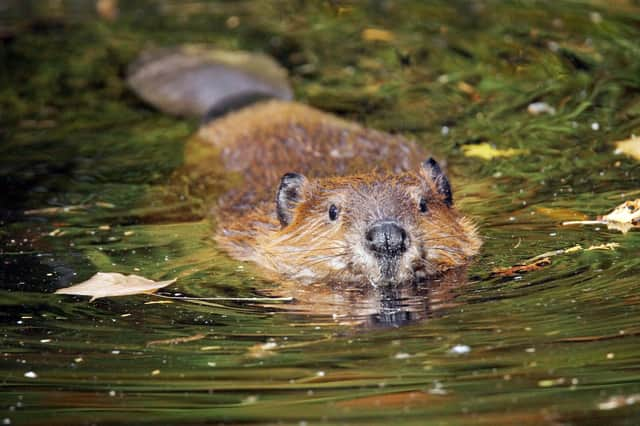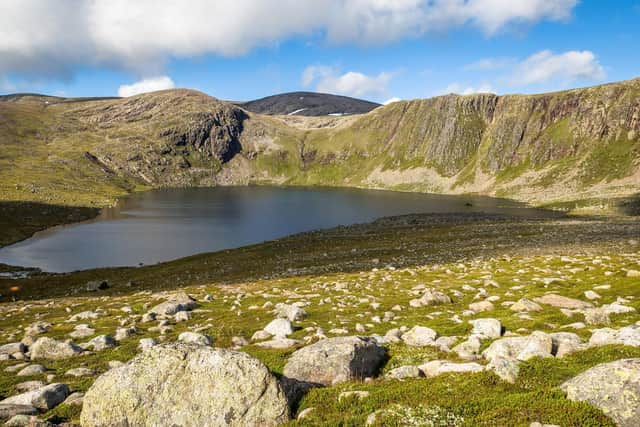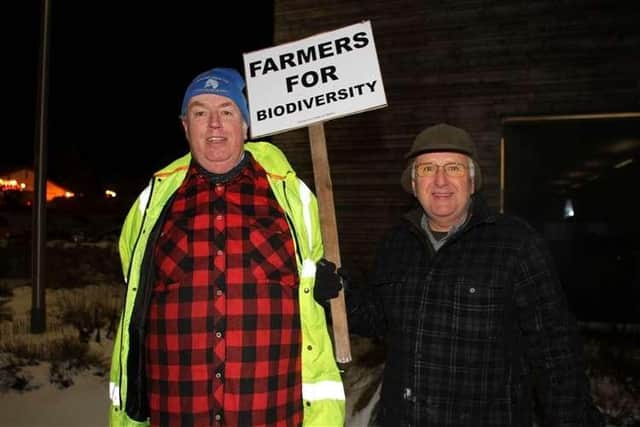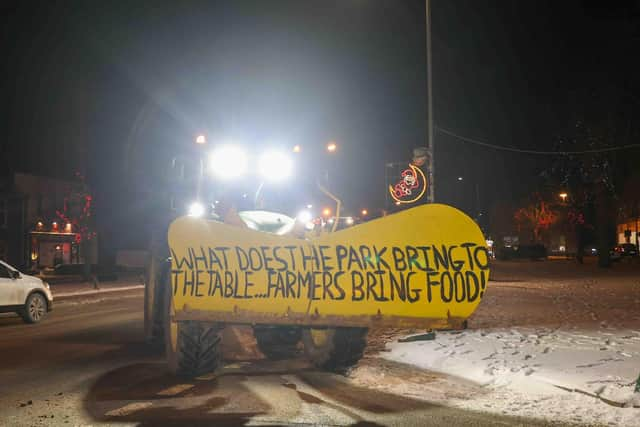Cairngorm farmers angry at beaver introduction and 'worse off' living in national park boundary 20 years on from 'empty promises'


Farmers in the Cairngorms National Park have said they are more disadvantaged than their peers outside the boundary despite being promised a host of advantages when the park was first created 20 years ago.
In the past two decades, bold habitat restoration projects have been high on the agenda for the park, including tree planting and beaver reintroduction initiatives.
Advertisement
Hide AdAdvertisement
Hide AdThose moves have led to farmers and crofters on the ground saying they feel pushed out by the Cairngorm National Park Authority (CNPA) – the group overseeing the park – with many saying they feel projects are often being imposed without their say or contribution.


The beaver reintroduction just before Christmas, for example, went ahead, with farmers telling The Scotsman they were not consulted. While many are not against beavers, they said had there been better communication, the animals would have ended up in a different and, in their eyes, more suitable area of the park.
The move sparked a demonstration, with some 70 farmers rolling up on their tractors to a meeting with the CNPA earlier this week demanding to be heard more on future plans.
But the beavers were just “the final straw that broke the camel’s back”, farmers said. Their concerns run a lot deeper.
Speaking to The Scotsman, they voiced how the vision announced at the outset of the park’s creation, such as preserving the area’s heritage, managing agricultural production to be consistent with, and enhance, the special qualities of the park, and to make available land for those who wish to farm, particularly new-entrants, were simply “empty promises”.


Prior to the park’s inception in 2003, farmers in the proposed boundary area were encouraged by the Cairngorm Partnership, a group responsible for the formation of the park, to take part in field trips to France to study how farming fitted into and could compliment national parks across the channel.
One of those included a trip to Cévennes National Park in the south of France.
In their review, the farmers wrote 16 points that stood out and that could be adopted back home. These included good relationships between the park authorities and farmers; incentives in place rather than restrictions; the role of farming being given “fundamental importance as integral to landscape and ecological conservation”; and the status given to farmers was high, which was reflected in the respect shown by officials and tourists, and noticeable in general farmer self-esteem.
Advertisement
Hide AdAdvertisement
Hide AdIt was also noted there was training and support for on-farm processing, and marketing and labelling of products was “impressive” and boosted business.


Retired Cairngorm farmer Alastair MacLennan was on one of the trips. He said: "We were very taken by what the park authority in France did for their farmers.
“Those in the Cévennes were known to be about €7,000 better off than those outwith the national park boundary. They had processing centres and a farmer could take anything they had from grapes to wild boar and they would help them make it into what they wanted.
"They ran footpaths by the farms and encouraged them to do B&Bs and had a national park shop. We came home optimistic and with expectations of what our national park could do. Not unrealistic expectations, though."
But on creation of the Cairngorms National Park, which celebrated its 20th anniversary last year, Mr MacLennan said while there had been some benefits, those had been “few and far between”.
"The CNPA has done some good things for the area, but from an agriculture perspective, its become gradually more irrelevant, if not detrimental,” he said.
"Farmers were so positive from the outset and we had a good relationship with the Cairngorm Partnership. It was very inclusive and I was pro-active and explaining the benefits, but progress has been pretty few and far between. I honestly feel like I have been conned.”
The CNPA, however, insists it has had “a significant voice” for farmers. Over the past 15 years it has employed farm advisors and a Cairngorms Farmers Forum set up by the park in 2009 met “on and off over a number of years up until 2019”.
Advertisement
Hide AdAdvertisement
Hide AdThe National Farmers Union Scotland is also represented on two of the CNPA’s advisory groups, and there are three farmers on the authority’s board.
A CNPA spokesperson said over the past two years alone, some 60 farms in the park, which make up about 10 per cent of the area, minus rough grazing, have benefited from funding for restoration and environment schemes that equate to about £180,000 of extra funding to what is generally available through national schemes.
But farmers have claimed in areas where beavers have been reintroduced and where they have burst flood banks, the costs to repair damages are “astronomical”.
Robert MacDonald, a local farmer from Grantown-on-Spey, said he knows one area were it is going to cost about £1.8m to repair beaver damage.
"And that cost comes solely on the landowner,” he said. “It’s hardly encouraging. "
Mr MacDonald said it is this disconnect between decision making and those on the ground that is causing more resentment in the rural sector. He said the rush to rewild the park and the Highlands was often referred to as “the carbon clearances” among the locals.
"They promised they’d look after our cultural heritage, but that’s been total nonsense – they’ve destroyed it,” he said. "We are worse off now in the park because of added bureaucracy and planning restrictions and this push to rewild everywhere.”
Ruaridh Ormiston, who also farms within the park, said: "We were worried 20-odd years ago that becoming a national park would turn us into an environmental Disneyland and we were concerned about our way of life and our cultural heritage,” he said.
Advertisement
Hide AdAdvertisement
Hide Ad"We were assured that this was a high priority to maintain. After all, the reason we were chosen as a national park was because of what we were, and what people living there have worked on for hundreds of years.
"But instead they are wanting to push us out.”
In response, rural affairs secretary Mairi Gougeon said: “I have made absolutely clear that producing food is a key priority for the Scottish Government. One of the core aims of our Vision for Agriculture in the future is to meet more of our own food needs sustainably and we know the contribution that farmers in Cairngorm area and elsewhere already make to this, not only producing food, but also addressing climate change and protecting and restoring nature. There is no contradiction between high quality food production and doing so in a way that works for climate and nature.”
She said the Scottish Government provides Scotland’s farmers and crofters with “the most generous package of direct support in the UK - worth over £600 million in 2024-25.”
Comments
Want to join the conversation? Please or to comment on this article.